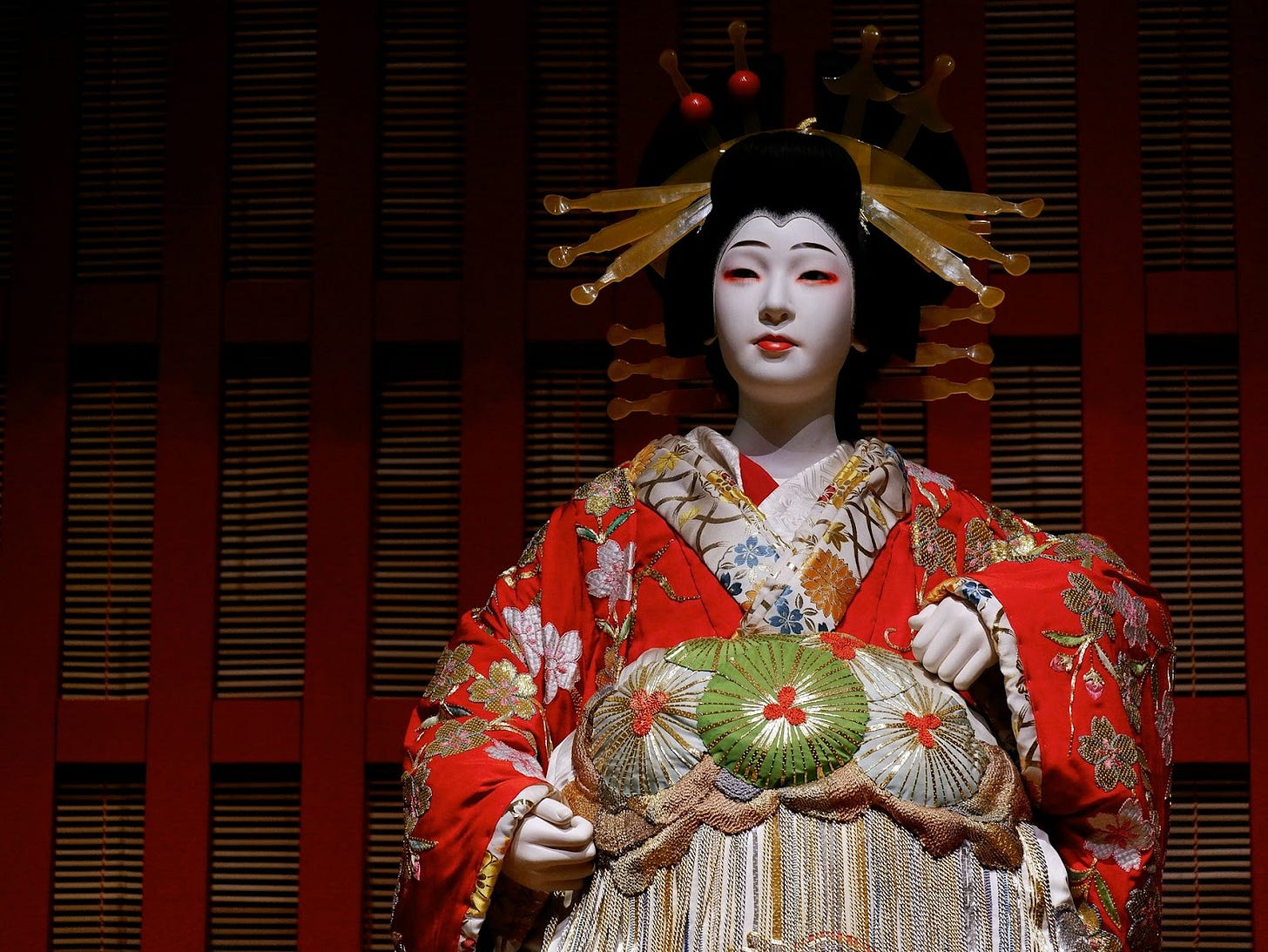How Women Were Kicked Off the Kabuki Stage
According to tradition, no women are allowed on the kabuki stage. If you've read enough history, you know this is another way of saying "it wasn't always like this at all, but we can't think of any other reason for imposing our arbitrary rules." So it won't surprise you that kabuki was created by a woman. Her name was Izumo no Okuni.
Okuni was a miko, a Shinto shrine maiden or priestess, at Izumo-taisha, the Grand Shrine in Izumo. Her duties as a miko included performing Shinto rituals, dancing, and standing around looking sexy to light the fire of Shinto fervor in people's minds and loins.
Miko were often associated with prostitution, but whether Okuni herself sold more than spiritual cleansing and a healthy respect for nature and ancestors, we don't truly know.
Historians have largely categorized her, scientifically, as a slutty minx, because the path to developing masterful skill and works of artistic genius is through a rocking vagina, apparently.
Starting in the 1590s, Okuni led a misfit troupe of dancers and actors in Kyoto. Their shows were comical and light, meant to entertain with comedy and sexual innuendo: they performed dances and comical skits about prostitutes and their customers. Most of the actresses were from the poorer classes and quite...professionally experienced.
It was like a slice-of-life cute-girls-doing-cute-things anime, but with more sleeping with the audience after the credits roll. Actually, Okuni's troupe probably included both men and women, but the men likely played the female roles and the women the male roles.
Okuni's plays were filled with pop culture references: her actors poked fun at the Noh theater of the day, performed popular dances, commented on current events, and dressed in exaggerated versions of the latest styles.
At the time, reckless and rowdy young men would dress in loud clothes, wear their hair in strange new ways, smoke pipes (tobacco had only been introduced by the Portuguese a few decades earlier), sleep around, and generally cause a ruckus.
These men were called kabukimono, "deviants" or "eccentric ones." Somewhere between juvenile delinquent, motorcycle gang, and yakuza, and with the subtle dress sense of an illicit love child of Elton John and Lady Gaga, they made great material for the stage. Okuni specialized in playing kabukimono characters, and her type of theater was soon called kabuki.
Okuni's troupe toured Japan around 1605–1610. People got wise to it and many imitators sprung up, copying the brand new style. The shogunate thought kabuki was an interesting, flashy, sexy new art form, a product of the truly creative minds of the time. And so it had to go. Society ran on order, not creativity. They especially questioned the interactions of the actresses with both their onstage and offstage customers. Sometimes samurai in the audience would get into brawls, vying for the attention of one of the performers.
Arguing like a bunch of boomer fundamentalists wearing Make Japan Great Again hats, the authorities decided that it was obviously the fault of those sluts on stage that the noble samurai-sans in the audience were not able to control their peepees, so in 1629 they banned onna-kabuki (women's kabuki). It was promptly replaced by wakashū kabuki (boys' kabuki), with predictable results. After a second ban, only adult males were allowed to perform on stage.
Though women sometimes perform kabuki today, the kabuki stage is still largely considered a male-only place.



I'm guessing the historians decided she was a big old slut despite lacking evidence because they couldn't think of any other way to personally discredit a woman who had created something important. Never mind that the samurai-sans were just as slutty.
Damn, femmes really paved the way